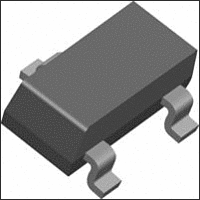LM4040BIM3-4.1 National Semiconductor, LM4040BIM3-4.1 Datasheet - Page 22

LM4040BIM3-4.1
Manufacturer Part Number
LM4040BIM3-4.1
Description
IC, SHUNT V-REF, 4.096V, 8.2mV, 3-SOT-23
Manufacturer
National Semiconductor
Specifications of LM4040BIM3-4.1
Topology
Shunt
Reference Voltage
4.096V
Reference Voltage Tolerance
8.2mV
Voltage Reference Case Style
SOT-23
No. Of Pins
3
Temperature Coefficient
± 100ppm/°C
Lead Free Status / RoHS Status
Contains lead / RoHS non-compliant
Available stocks
Company
Part Number
Manufacturer
Quantity
Price
Part Number:
LM4040BIM3-4.1
Manufacturer:
NS/国半
Quantity:
20 000
www.national.com
Electrical Characteristics(Notes)
Note 1: Absolute Maximum Ratings indicate limits beyond which damage to the device may occur. Operating Ratings indicate conditions for which the device is
functional, but do not guarantee specific performance limits. For guaranteed specifications and test conditions, see the Electrical Characteristics. The guaranteed
specifications apply only for the test conditions listed. Some performance characteristics may degrade when the device is not operated under the listed test
conditions.
Note 2: The maximum power dissipation must be derated at elevated temperatures and is dictated by T
ambient thermal resistance), and T
number given in the Absolute Maximum Ratings, whichever is lower. For the LM4040, T
is 326˚C/W for the SOT-23 package, and 180˚C/W with 0.4" lead length and 170˚C/W with 0.125" lead length for the TO-92 package and 415˚C/W for the SC70
Package.
Note 3: The human body model is a 100 pF capacitor discharged through a 1.5 kΩ resistor into each pin. The machine model is a 200 pF capacitor discharged
directly into each pin.
Note 4: Typicals are at T
Note 5: Limits are 100% production tested at 25˚C. Limits over temperature are guaranteed through correlation using Statistical Quality Control (SQC) methods.
The limits are used to calculate National’s AOQL.
Note 6: The boldface (over-temperature) limit for Reverse Breakdown Voltage Tolerance is defined as the room temperature Reverse Breakdown Voltage Tolerance
T
max∆T = 65˚C is shown below:
The total over-temperature tolerance for the different grades in the exteded temperature range where max ∆T = 100 ˚C is shown below:
Therefore, as an example, the A-grade LM4040-2.5 has an over-temperature Reverse Breakdown Voltage tolerance of
Note 7: Load regulation is measured on pulse basis from no load to the specified load current. Output changes due to die temperature change must be taken into
account separately.
Note 8: Thermal hysteresis is defined as the difference in voltage measured at +25˚C after cycling to temperature -40˚C and the 25˚C measurement after cycling
to temperature +125˚C.
±
[(∆V
MIN
R
or T
/∆T)(max∆T)(V
MAX
, and V
R
R
)]. Where, ∆V
is the reverse breakdown voltage. The total over-temperature tolerance for the different grades in the industrial temperature range where
J
= 25˚C and represent most likely parametric norm.
A
R
(ambient temperature). The maximum allowable power dissipation at any temperature is PD
/∆T is the V
C-grade:
D-grade:
C-grade:
D-grade:
A-grade:
B-grade:
E-grade:
E-grade:
R
temperature coefficient, max∆T is the maximum difference in temperature from the reference point of 25˚C to
±
±
±
±
±
±
±
±
0.75% =
0.85% =
1.15% =
1.98% =
2.98% =
1.5% =
2.5% =
3.5% =
±
±
±
±
±
±
±
±
2.0%
0.5%
1.0%
0.1%
0.2%
2.0%
0.5%
1.0%
22
±
±
±
±
±
±
±
±
150 ppm/˚C x 100˚C
100 ppm/˚C x 100˚C
150 ppm/˚C x 100˚C
Jmax
100 ppm/˚C x 65˚C
100 ppm/˚C x 65˚C
150 ppm/˚C x 65˚C
100 ppm/˚C x 65˚C
150 ppm/˚C x 65˚C
= 125˚C, and the typical thermal resistance (θ
Jmax
(maximum junction temperature), θ
±
2.5V x 0.75% =
max
JA
= (T
), when board mounted,
±
19 mV.
Jmax
− T
JA
A
)/θ
(junction to
JA
or the












